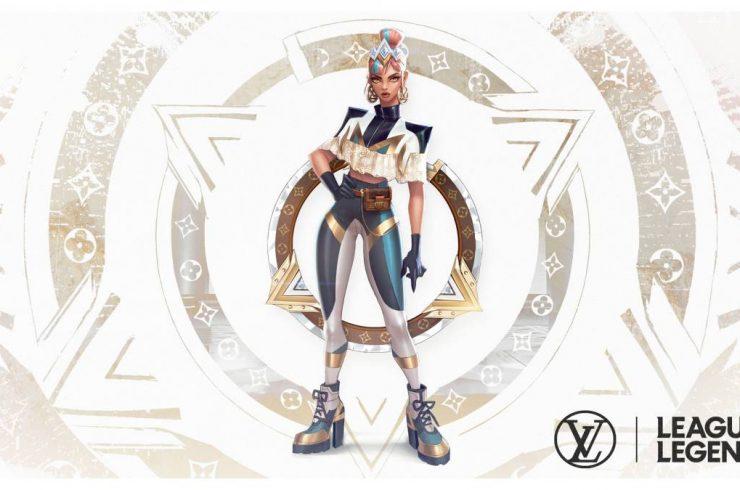Tradition and digitization: when luxury modernizes

Luxury has the image of an impenetrable sector in which the selection of talents is fierce.By elitist and traditional definition, it does not escape the new contemporary issues and must modernize.Crisis obliges, the major luxury brands have used their creativity to digitize and surf the trends brought by the new generation.
For luxury houses, the challenge is size. They must keep and cultivate their prestigious heritage while modernizing to be in tune with the times and corresponding to the time. Digital which, a few years ago, was considered a threat by the most prestigious houses, has become essential and even an engine in their modernization. A sign of times, the Marseille Blogger Garance Doré is today sitting at the forefront of fashion shows, at the same level as Anna Wintour which embodies the classic and traditional model of luxury. The arrival of these new digital players upset the strategic functions of the sector. Creation and know-how must now share the podium with innovation and digital. An upheaval in a most statutory sector which has been strongly propelled by the crisis linked to the COVVI-19. How to cope with the need to digitize when the basis of your identity is based on the difficulty of access? This is the problem that the luxury sector encounters in the face of the development of e-commerce. If some brands refuse to lend themselves to the game, others have chosen to open online stores with a reduced catalog. Still others have reclaimed digital technology by involving it more frequently in the customer experience. But where digital facilitates access and multiplies the possibilities, luxury companies must cultivate the scarcity of their products and perpetuate traditions. Digitalization of the luxury sector cannot therefore resemble that of other areas.
Collaborate with new sectors
If, historically, brands concluded partnerships with sectors such as the automobile, the trend is now in collaborations with new innovative territories. The video game industry represents an important potential for diversification for luxury brands because, more than a fashion effect, it is a substantive trend. After the partnerships between Louis Vuitton and League of Legends, Moschino and the Sims, or Marc Jacobs and Valentino with Animal Crossing, Longchamp launched in October an atypical collection with Pokémon! A way to break the codes and surprise, for Sophie Delafontaine, artistic director of Longchamp. "The idea was to bring together two completely different worlds, and show that we can totally cohabit the world of video games with the world of fashion and our know-how. »The products of the French leather maker find themselves in the Pokémon Go game, where players can floac their favorite avatar of the brand's logo. In real as in virtual, customers can now wear pikachu on their bag. It’s now “fashion”. Luxury invests the world of video games to try to better seduce the strategic generation Z, intended to become its main customers. "We did a lot with art and design. Gaming is a new form of exploration and creativity with a hyper -strong imagination and a richness of graphics, "explains Sophie Delafontaine.

Generation Z, a new target of luxury
Cibler cette nouvelle génération qui constitue la clientèle de demain passe par des collaborations, mais pas seulement. Les marques de luxe elles- mêmes prennent l’initiative et créent leurs propres jeux mobiles comme Burberry avec l’application « B Bounce », Gucci avec « Gucci Arcade » ou Hermès avec « H-pitchhh ». Au-delà d’une affinité grandissante des directions artistiques avec ce secteur créatif, l’objectif est bien de s’adresser à la cible stratégique de la génération 15-24 ans qui, selon une étude du cabinet Bain & Company, devrait réaliser 40 % des achats de produits de luxe d’ici 2035. Pour s’adresser à cette nouvelle cible, les marques doivent étendre leur présence et leurs opérations sur les réseaux sociaux. Durant le confinement, certaines marques ont développé des salons de discussion en ligne, des services de visioconférence, de la vente sur WeChat et de la réalité augmentée sur smartphones. Comme la maison Chaumet qui a essaimé des filtres sur Instagram afin de permettre aux utilisateurs d’essayer des bijoux via l’application. Plus récemment, l’application TikTok a attiré plusieurs enseignes. Des maisons telles que Louis Vuitton, Christian Dior et Balenciaga ont repéré le potentiel de cette application visant un public jeune (60 % des utilisateurs sont âgés de 13 à 24 ans), et ont également renforcé leur présence sur Instagram. TikTok a annoncé plusieurs partenariats « luxe », à l’occasion du lancement de son propre « Month-long digital fashion event » de l’automne 2020.
Modernization quest
The health crisis, as we have seen, has greatly experienced the luxury sector, causing a drop in income by 29 % in the first half of 2020, accelerating the need for digital transformation. Faced with the boom in online sales, brands had to react quickly. While some were reluctant to scan their activities before the pandemic, many houses, like Bulgari, Cartier, Montblanc and Piaget, opened an e-commerce site. Some brands, such as Gucci and Hublot, set up, in a few weeks, a digital shop where the customer can chat live with his advisor. To respond to this new issue, Dior has chosen to collaborate with a start-up, by signing a partnership with the American virtual and augmented, Obsess, to offer buyers a 3D and 360 ° site where they can discover Its collection of perfumes, soaps and candles, zoom in on the items and buy via the online store.
Find the right middle
If, to sell their creations by overcome the closure of flagship shops, the big houses had to turn to the e-commerce solution, they also had to reinvent themselves to present their collections. While the traditional parades have been canceled, it was obviously to the Internet that they turned. No photographers or impressive sets, the shows are displayed on Tiktok, Instagram TV, YouTube or dedicated mini-sites, such as the one created by the Armani house to present the new collection of its Emporio line. During Milan Fashion Week, brands were able to present their new features in pre-recorded parades thanks to drones and special effects. "During confinement, I became aware of the importance of technology in our lives. And in reality, thanks to her, we have never been so numerous to a parade, "said Miuccia Prada during the talk broadcast immediately after the show. The traditional canceled parades, the haute couture houses have therefore redoubled inventiveness to seduce buyers and influencers via interposed screens. Luxury houses must now show that they are able to adapt to all situations. By mixing traditional codes and new technologies, they manage to seduce their usual audience, and to be talked about on their parades on social networks.
Technology at the service of fashion democratization
Luxury brands customers are used to a high level of service when they go to shops. It is therefore essential that brands emphasize the creation of a personalized and high quality digital experience. On the Gucci website, customers have the possibility of being remotely supported by a brand seller. Chanel has launched a collaboration with Farfetch by developing a remote fitting program, thanks to virtual cabins. According to the "Virtual Fitting Room Market Report", the virtual fitting cabin market is expected to reach a size greater than $ 19 billion by 2030 when it was only 3 billion in 2019. Social networks have allowed to advance the democratization of high -end fashion by positioning itself as actors of technological innovation. At New York Fashion Week, we found Snapchat who, for the first time, competed Instagram, a favorite network in the environment. Indeed, Vogue launched her Snapchat Discover channel and creator Misha Nonoo revealed her collection on the Refinery 29 channel. The world of fashion is evolving and many innovations are expected in future seasons. The digitalization of the luxury sector has exposed it more directly to customer opinions, in positive and negative. Through influence marketing, luxury brands market the dream by giving it a human dimension. The products then have a digital showcase.
If luxury has somewhat relied on embarking on digital, it is today the sector that offers the most novelties and innovations.With the multiplication of flagships and concept stores, it is always looking for innovation and the differentiating element.Luxury seeks to impress, to make an impression, and the digital allows it exactly that.Without losing his prestige, he finds a new identity and a new positioning.Despite the health crisis and confinement, luxury brands have development and growth prospects for the years to come.
<<< A lire également : La Blockchain, Avenir Du Luxe ? Le Cas De GoodsID >>>
- Prev
- Next







